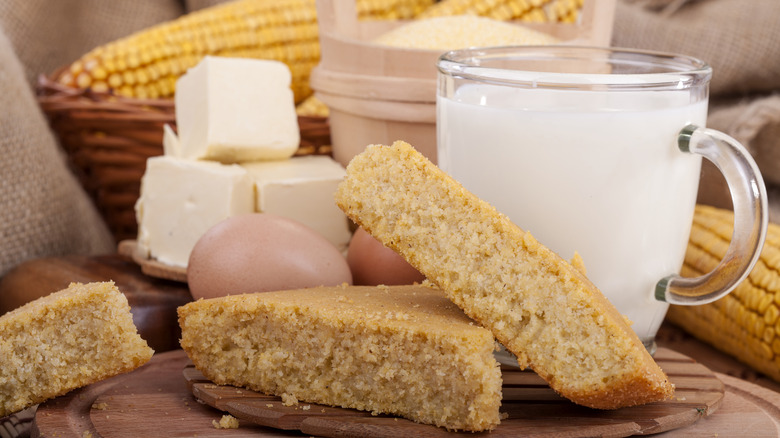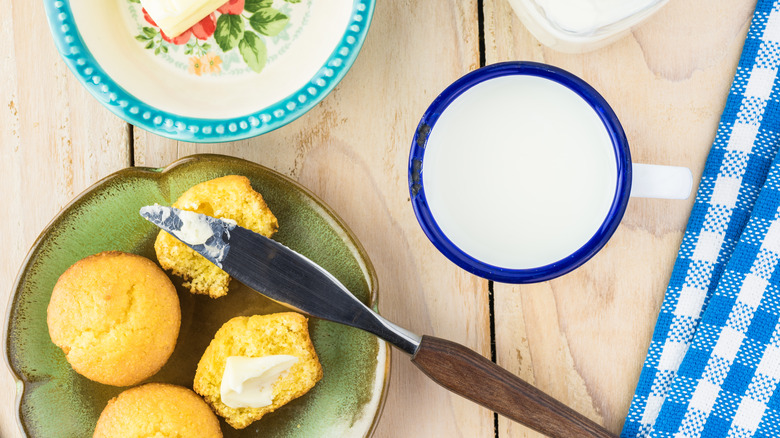The Traditional Southern Dish Of Milk-Soaked Cornbread
There's something quintessentially Southern about a piece of cornbread soaked in buttermilk. It's a tradition that dates back centuries and is a testament to the simplicity and resourcefulness of Southern cooking. But what's the story behind this comfort food, and why is buttermilk so integral to the experience?
Cornbread's origins in America can be traced back to Native American cuisine. After Native Americans began grinding corn into cornmeal, European settlers arrived and began using the ingredient in their own recipes, leading to the birth of the cornbread we know today. Sometime after that, although no one knows exactly when or where, milk — traditionally buttermilk — was added to the dish, resulting in a spoonable, comforting dish that's often enjoyed as a snack or simple dessert.
Buttermilk, in its original form, is the liquid left behind after churning butter out of cream (today's buttermilk is more of a fermented yogurt drink). It has a slightly sour taste, courtesy of the lactic acid produced by bacteria in the milk. So, using buttermilk in and with cornbread imparts a subtle tang, a depth of flavor that beautifully contrasts the sweetness of the corn. While some might opt for regular milk, which delivers a more neutral-tasting bread, purists swear by buttermilk for that authentic Southern touch.
How to make and serve cornbread with buttermilk
To enjoy milk-soaked cornbread the truly Southern way, which is beloved by the people of the Southern Appalachian Mountains, crumble cornbread into a glass or bowl and cover it with buttermilk (or regular milk, if you prefer). But before you can combine the two ingredients and serve it up, you'll need to know how to make the cornbread itself.
Cornbread is quick and easy to make. Start by covering the bottom of a cast iron skillet with oil and heating it on a stove as the oven preheats to 400 degrees Fahrenheit. Next, combine self-rising cornmeal with vegetable oil, eggs, and just enough buttermilk to combine. Once the mixture is ready, pour it into the hot skillet and let it bake for around half an hour. The skillet should sizzle right when the batter hits the pan, so be sure to preheat it well. What you'll end up with is a tender and moist savory bread that's ready to be served up with butter at dinner and transformed into dessert when covered with buttermilk.

